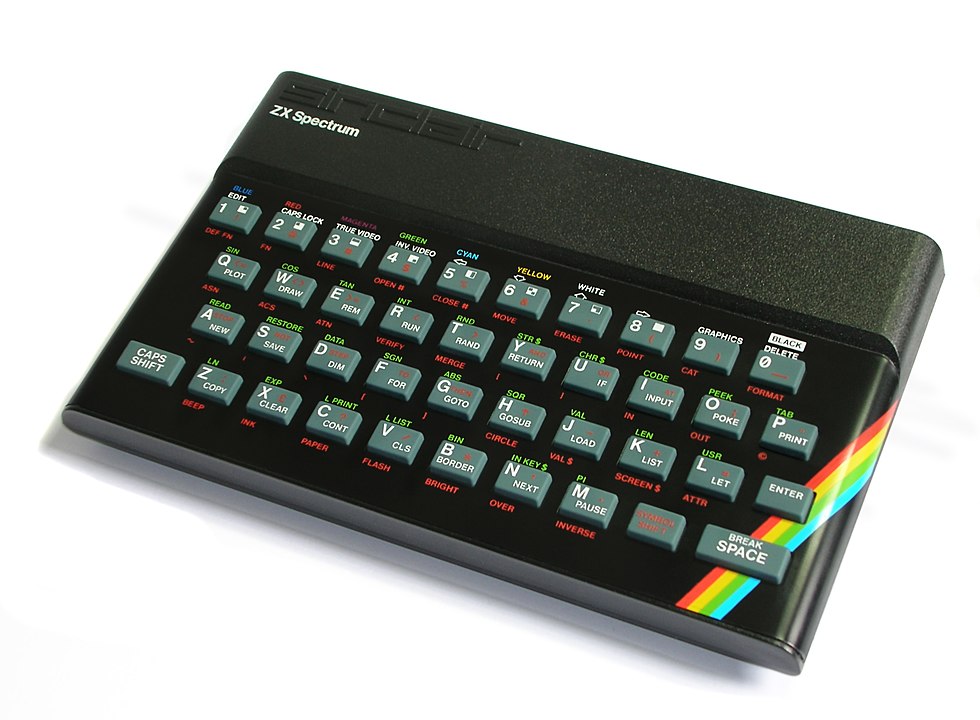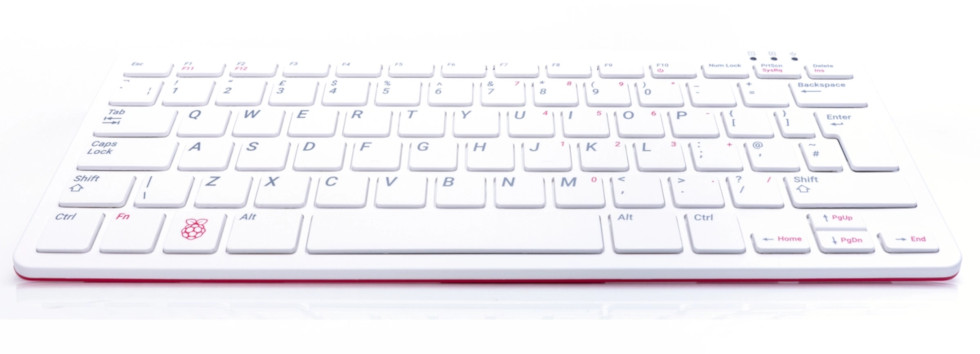The release of the Raspberry Pi 400 personal computer reminded me of a wildly popular home computer that was launched in a similar computer-in-a-keyboard format almost 40 years ago: the Sinclair Research ZX Spectrum. I decided to compare the two, following the steps of an earlier comparison I performed between the 2015 Rapsberry Pi Zero and the 1957 Elliott 405.
 ZX Spectrum picture by Bill Bertram — Own work, CC BY-SA 2.5
ZX Spectrum picture by Bill Bertram — Own work, CC BY-SA 2.5
Comparison table
| ZX Spectrum | Raspberry Pi 400 | |
|---|---|---|
| Launch year | 1982 | 2020 |
| Price | £125 | £ 94 |
| (£440 in 2020 prices) | ||
| Processor | Z80A | BCM2711 Cortex-A72 (ARM v8) |
| CPU register width | 8 bit | 64 bit |
| Clock frequency | 3.5MHz | 1.8GHz |
| Number of cores | 1 | 4 |
| Main memory | 16 kB | 4GB |
| Networking | None | Gigabit Ethernet & WiFi |
| Secondary storage | Audio cassette tapes | 16GB microSD card |
| (not included) | (included) | |
| Video output | TV RF modulator | Two micro HDMI ports |
| Video resolution | 256×192 | 3840×2160 |
| Output colors | 16 | 16 million |
| Graphics support | PLOT, DRAW | OpenGL ES 3.0 |
| Video support | None | H.265 (decode); H.264 (decode, encode) |
| Keyboard | 40 keys | 78 keys |
| Board chips | 11 VLSI, 7 SSI | 7 VLSI, 3 MSI |
| Dimensions | 233×144×30 mm | 286 × 122 × 23 mm |
 Photo Credit: Raspberry Pi Foundation
Photo Credit: Raspberry Pi Foundation
Summing up
The remarkable hardware improvements apparent in the comparison of the two products, combined with the rise of open source software, allow the Raspberry Pi 400 to come with an industrial-strength operating system offering internet connectivity and free access to around fifty thousand software packages. The Raspberry Pi 400 showcases the amazing progress personal computing technology has made over the past 40 years.
Comments Post Toot! TweetUnix make vs Apache Airflow (2024-10-15)
How (and how not) to present related work (2024-08-05)
An exception handling revelation (2024-02-05)
Extending the life of TomTom wearables (2023-09-01)
How AGI can conquer the world and what to do about it (2023-04-13)
Twitter's overrated dissemination capacity (2023-04-02)
The hypocritical call to pause giant AI (2023-03-30)
AI deforests the knowledge’s ecosystem (2023-03-16)
How I fixed git-grep macOS UTF-8 support (2022-10-12)
Last modified: Monday, November 2, 2020 12:37 am
Unless otherwise expressly stated, all original material on this page created by Diomidis Spinellis is licensed under a Creative Commons Attribution-NonCommercial 4.0 International License.




